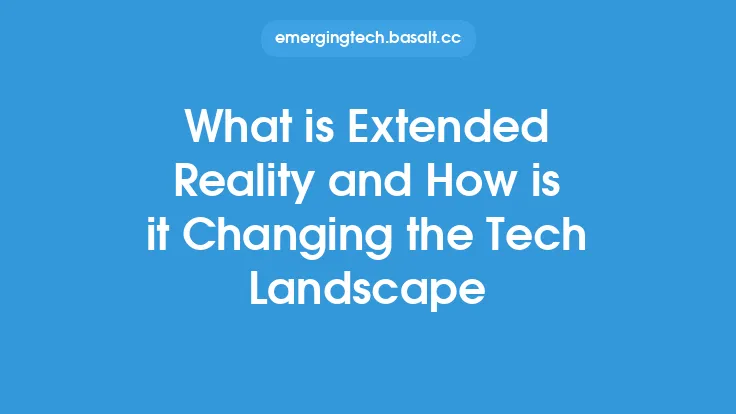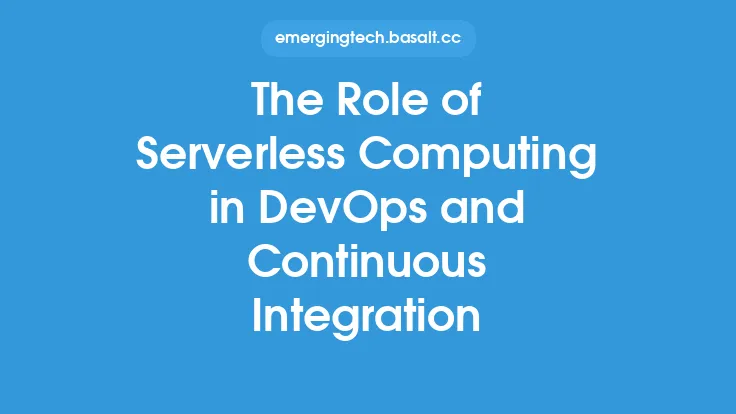Serverless computing is a cloud computing model in which the cloud provider manages the infrastructure and dynamically allocates computing resources as needed. This approach allows developers to write and deploy code without worrying about the underlying infrastructure, such as servers, storage, and networking. In a serverless environment, the cloud provider is responsible for provisioning, scaling, and managing the infrastructure, allowing developers to focus on writing code and delivering applications.
Introduction to Serverless Computing Concepts
Serverless computing is based on a pay-as-you-go model, where users only pay for the computing resources they use. This approach is different from traditional cloud computing models, where users pay for a fixed amount of resources, regardless of whether they are used or not. Serverless computing is often associated with Function-as-a-Service (FaaS), which allows developers to deploy small code snippets, known as functions, that can be executed on demand. FaaS platforms, such as AWS Lambda, Google Cloud Functions, and Azure Functions, provide a managed environment for deploying and executing functions.
How Serverless Computing Works
In a serverless environment, the cloud provider manages the infrastructure and provides a set of APIs that allow developers to interact with the system. When a request is made to a serverless application, the cloud provider dynamically allocates computing resources, such as CPU, memory, and storage, to execute the request. The cloud provider also manages the scaling of the application, automatically adding or removing resources as needed to handle changes in workload. This approach allows serverless applications to scale quickly and efficiently, without the need for manual intervention.
Key Components of Serverless Computing
There are several key components that make up a serverless computing environment. These include:
- Functions: Small code snippets that can be executed on demand. Functions are typically written in a programming language, such as Java, Python, or Node.js, and are designed to perform a specific task.
- Triggers: Events that trigger the execution of a function. Triggers can be based on a variety of events, such as HTTP requests, changes to a database, or messages from a message queue.
- Runtime: The environment in which functions are executed. The runtime provides the necessary libraries, frameworks, and dependencies for the function to execute correctly.
- Storage: The storage system used to store data and other assets. Serverless computing environments often use object storage, such as Amazon S3, to store data.
Serverless Computing Architecture
A serverless computing architecture typically consists of several layers, including:
- Presentation layer: The layer that handles user input and output. This layer is typically responsible for handling HTTP requests and responses.
- Application layer: The layer that contains the business logic of the application. This layer is typically responsible for executing functions and interacting with other services.
- Data layer: The layer that stores and manages data. This layer is typically responsible for storing and retrieving data from a database or other storage system.
- Infrastructure layer: The layer that provides the underlying infrastructure for the application. This layer is typically managed by the cloud provider and includes services such as compute, storage, and networking.
Serverless Computing Providers
There are several serverless computing providers available, including:
- Amazon Web Services (AWS): AWS provides a range of serverless computing services, including AWS Lambda, API Gateway, and S3.
- Microsoft Azure: Azure provides a range of serverless computing services, including Azure Functions, Azure Logic Apps, and Azure Storage.
- Google Cloud Platform (GCP): GCP provides a range of serverless computing services, including Google Cloud Functions, Google Cloud Dataflow, and Google Cloud Storage.
- IBM Cloud: IBM Cloud provides a range of serverless computing services, including IBM Cloud Functions, IBM Cloud API Connect, and IBM Cloud Storage.
Security and Monitoring in Serverless Computing
Security and monitoring are critical components of a serverless computing environment. Serverless computing providers typically provide a range of security features, such as encryption, access controls, and monitoring tools. Developers can also use third-party security tools and services to provide additional security and monitoring capabilities. Some of the key security and monitoring considerations in serverless computing include:
- Authentication and authorization: Ensuring that only authorized users and services can access and execute functions.
- Data encryption: Ensuring that data is encrypted in transit and at rest.
- Monitoring and logging: Monitoring and logging function execution, errors, and other events to ensure that the application is running correctly and securely.
- Compliance: Ensuring that the serverless computing environment meets relevant compliance requirements, such as HIPAA, PCI-DSS, and GDPR.





